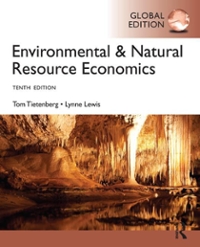Question
1. On March 31, 2021 in the foreign exchange market, one U.S. dollar was 110.00 Japanese yen ( e = 110.00 /$). If the dollar
1. On March 31, 2021 in the foreign exchange market, one U.S. dollar was 110.00 Japanese yen (e = 110.00 /$). If the dollar depreciates by 2 percent against the yen during the 12 months following March 31, 2021, what would be the dollar-yen exchange rate on March 31, 2022?
a)120.0 /$.
b)112.2 /$.
c)112.0 /$.
d)108.0 /$.
e)107.8 /$.
2. On May 26, 2021 in the foreign exchange market, one euro was 1.23 U.S. dollar (e = 1.23$/). Exactly one year earlier on May 26, 2020 this exchange rate was e = 1.09$/. In that year,
a)the euro depreciated against the dollar by 14.0 percent.
b)the euro appreciated against the dollar by 14.0 percent.
c)the euro appreciated against the dollar by 12.8 percent.
d)the euro depreciated against the dollar by 12.8 percent.
e)the euro appreciated against the dollar by 11.4 percent.
f)the euro depreciated against the dollar by 11.4 percent.
3. In the situation described in Question 2, the price level in the U.S. economy had risen by 4.2 percent in the approximate period described in the question, while the corresponding figure for the Eurozone was 1.7 percent. Given this information, we can say that between May 26, 2020 and May 26, 2021, the real exchange rate of the euro, rounded to the whole percentage point, has appreciated against the dollar by
a)17 percent.
b)13 percent.
c)11 percent.
d)10 percent.
e)2 percent.
Real exchange rate = Nominal Exchange Rate x Domestic Price / Foreign Price
1.4.2% (U.S.) - 1.7% (Eurozone) = 2.5%
2.1.23 + (1.23 * 2.5%) = 1.26%
3.1.26 - 1.09 / 1.09 = 18.3%
4. Questions' 2 and 3 settings are characterized by a change in the exchange rate from 1.09 U.S. dollars per Euro (e = 1.09$/ ) on May 26, 2020 to 1.23 U.S. dollars per Euro (e = 1.23$/) on May 26, 2021, as well as an increase in the price level in the U.S. economy of 4.2 percent and an increase in the price level of 1.7 percent in the Eurozone, which resulted in the overall appreciation of the real exchange rate of the Euro. You found the specific magnitude of this real exchange rate appreciation in Question 3. Given this information, we can say that compared to the US products, Eurozone products have become relatively more expensive
a)for Eurozone residents, but relatively more expensive for Americans.
b)only for people outside Eurozone and America.
c)for everyone around the world.
d)only for Eurozone residents.
e)only for Americans.
5. Peach Inc. manufactures farming equipment in the United States and exports some of its products to Canada. In the Canadian market, it competes with local firms and has to match their prices in Canadian dollars (C$). Suppose the Canadian market prices remain constant this year, but the Canadian dollar (C$) depreciates vis--vis the US$ by 3%. If Peach Inc. wants to remain as competitive in the Canadian market this year as it has been in the past price-wise, it must
a)lower the US$ price of its exports to Canada by more than 3%.
b)lower the US$ price of its exports to Canada by 3%.
c)keep the US$ price of its exports to Canada the same.
d)raise the US$ price of its exports to Canada by 3%.
e)raise the US$ price of its exports to Canada by more than 3%.
6. Suppose the euro is your home currency. If the rates of interest on euro and yen deposits are equal to each other, i = i, and the spot exchange rate is less than the expected future exchange rate, e < ee, then in the spot market for foreign exchange,
a)covered interest parity will hold.
b)uncovered interest parity will hold.
c)supply and demand will be balanced.
d)there will be excess demand for the yen.
e)there will be excess demand for the euro.
7. Assume that the interest parity condition holds and risk-free, one-year rates of interest in the US and Euro area are -0.5% and 0%, respectively. If the Fed raises the rate of interest in the US to 0.25%, the expected appreciation of the dollar vis--vis the euro during the next 12 months
a)will rise.
b)will decline.
c)may rise, may decline.
d)will remain unchanged.
8. Let ef and ee be the current one-year forward and expected exchange rates of the dollar vis--vis the yuan. Assume that the covered and uncovered interest parities both hold at all times. If the improving prospects of the US economy causes the expected exchange rate ee to go up, then
a)ef will decline by the same amount that ee rises.
b)ef will rise by more than the increase in ee.
c)ef will rise by less than the increase in ee.
d)ef will rise by the same amount as ee.
e)ef will remain unchanged.
Step by Step Solution
There are 3 Steps involved in it
Step: 1

Get Instant Access to Expert-Tailored Solutions
See step-by-step solutions with expert insights and AI powered tools for academic success
Step: 2

Step: 3

Ace Your Homework with AI
Get the answers you need in no time with our AI-driven, step-by-step assistance
Get Started


